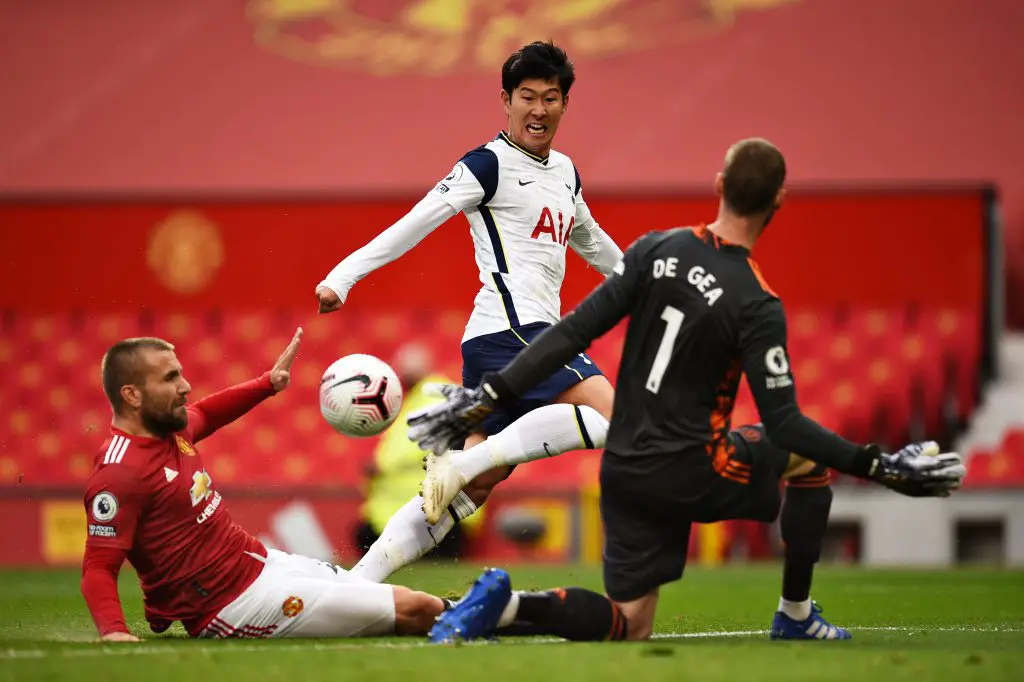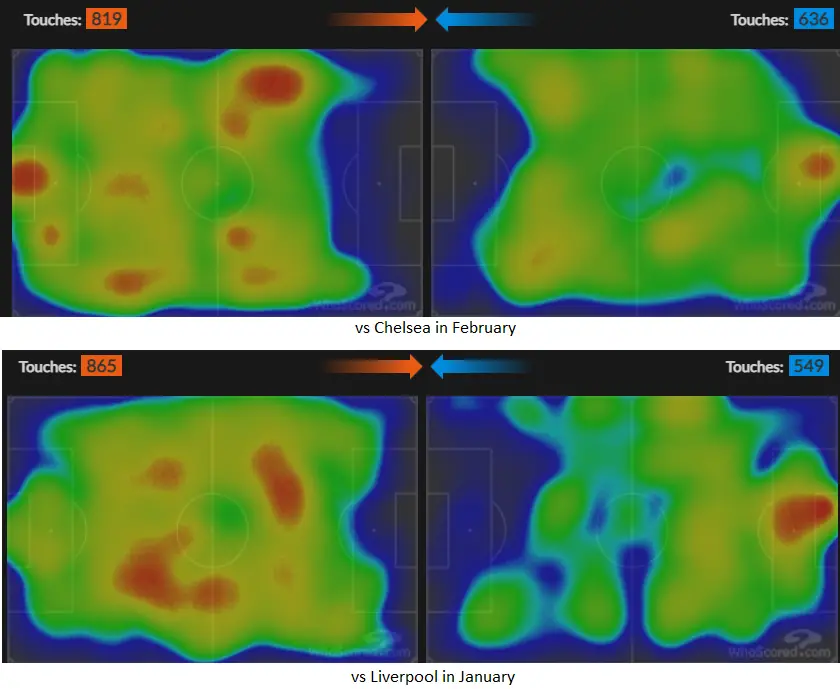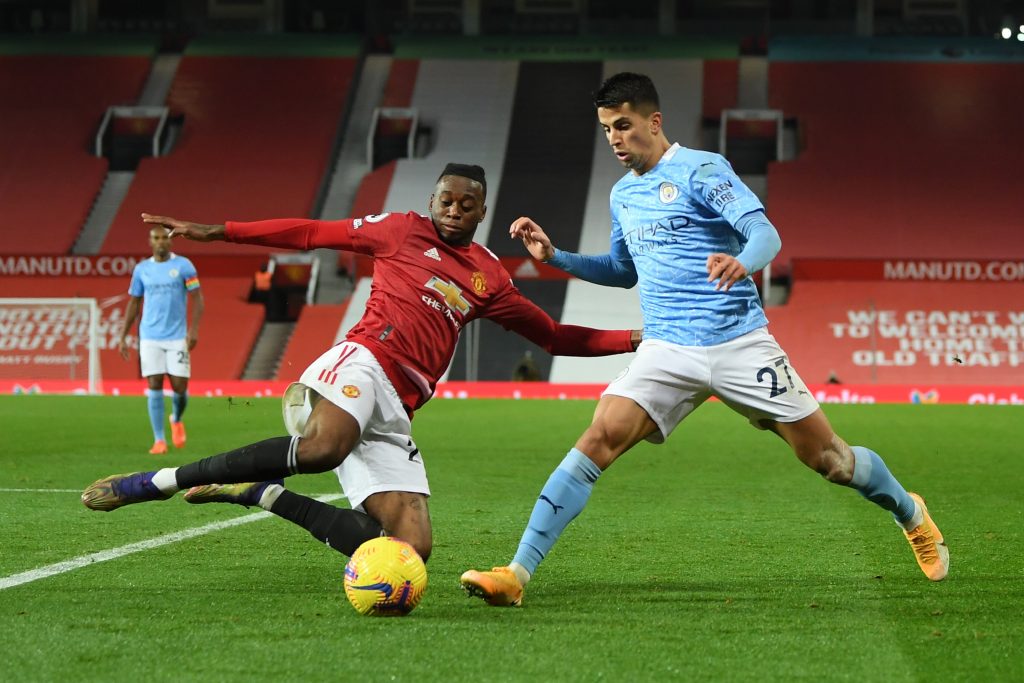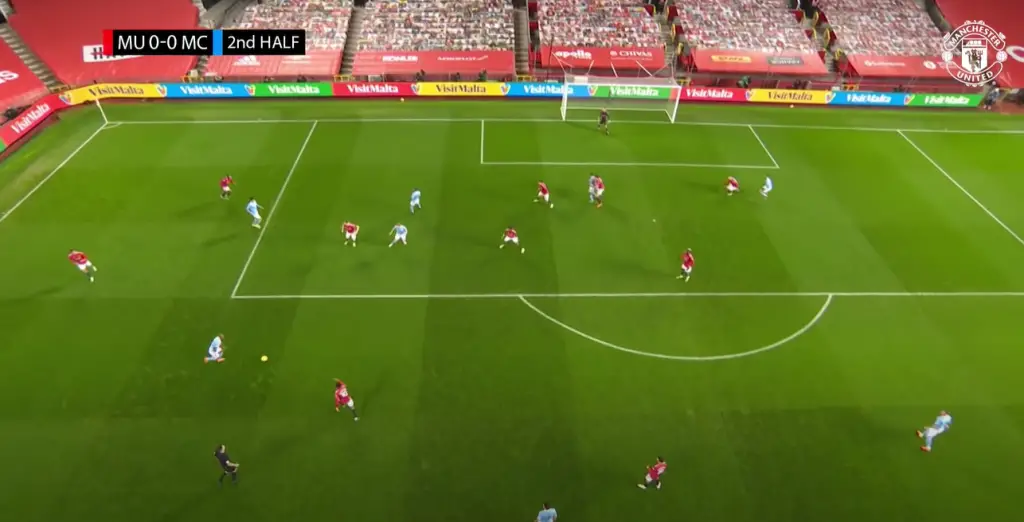Manchester United have been nothing short of poor against the ‘big six’ this season. The big six, of course, are other top Premier League clubs such as Arsenal, Liverpool, Chelsea, Tottenham Hotspur, and Manchester City.
In 7 Premier League games against them so far this campaign, United have not won a single match. The most worrying thing about it is that they’ve scored just 1 goal (a penalty) in that time. And that goal came in the 1-6 defeat to Tottenham Hotspur.
This is even more peculiar if taken in the context of the Red Devils being the highest-scoring team in the Premier League this season after 26 games. So what are they doing different against the big 6?
Lack of possession
The first and foremost thing seems to be how Manchester United surrender the ball against big teams and let them do the work. This is in contrast to how they play in the rest of the games as they average 54.7% possession after 26 league matches this season.

But against the big-6, this changes. Take the game against Liverpool in January 2021 for example. The Reds had 65.7% possession against United. This trend was also seen against Manchester City in December 2020, where the Citizens saw 53.9% of the ball.
The trend is seen in almost all other league games against the big-6, where United average lower possession in those matches than they have over the course of the season. The only exception was the game against Arsenal at the Emirates in January, where they kept 56.7% possession.
Lack of attacking intensity

In light of the above statistics, compare their attacking numbers against the big-6. For example, they just got 4 shots on target against Chelsea in their more recent league game. The number goes down to 2 against Manchester City and similarly, they had just 4 on target against Liverpool in the draw in January.
In fact, in all of these games, they average less than 5.9 shots per game, which is their average for the whole season after 26 league games. (h/t WhoScored)
This is a telling statistic because even if they do manage to get a lot of shots against the big-six, such as the 11 they attempted against Chelsea, they are not managing to make the opposition goalkeeper work as much, which is clear from the fact that they have not scored from open play against the big six.
Sitting back deep
Manchester United are also largely adopting the trend to sit deep against their big 6 opponents. For example, see the heatmaps of their entire team against Chelsea and Liverpool in the league this season.

In both those instances, United are seeing more action inside their own half and the opposition teams are playing much further up.
Defensive approach summed up by full-backs
United’s defensive approach to the games against the big 6 can be summed up by how their full-backs play. Taking their heatmaps and area of action against a big 6 opponent and comparing it with their heatmaps against other opponent shows marked results.
Take Luke Shaw for example here (see the image below). He played far deeper against Chelsea in February than he did against the other two teams just before that game.

Verdict
The claims made in this conclusion are backed up with evidence in the article above.
From the article above, it becomes clear what United are doing different in the games against big 6. They are adopting a more defensive approach to these matches as compared to other games.
The players, as a result, tend to play deeper, and it is evident in Luke Shaw’s heatmap above and the average heatmap of the team against two big 6 teams in Image A.
That, of course, means that United would have fewer chances to attack and let their opponents create more, as evident from their low possession stats against the big teams this season compared to their possession against other sides.

And unsurprisingly, it leads to fewer shots on target, which means fewer chances to score. While it is expected for big clubs to not attack other big teams as they do against, say relegation contenders, United’s drop in statistics and approach to these games is telling.
Solskjaer’s approach to these games can be best summarised in the words of Paul Ince, who had a go at the Norwegian for parking the bus at Anfield in January despite the Reds starting two central midfielders in their defence. (h/t Irish Mirror)
“I remember a few years ago when Mourinho took United to Anfield, he parked the bus and got absolutely slaughtered for it – that’s exactly what Ole Gunnar Solskjaer did in the first half.
We knew they were going to defend and rely on their quick players like Anthony Martial and Marcus Rashford to counter-attack Liverpool, but I’ve played in Man United teams, you don’t go to Anfield to defend.”
Hence, it is no fluke that they have scored just 1 goal in these 7 games and won none of them this season. To win these games, they will have to be braver. The smash and grab approach can work at times, but over the season, especially if you want to be title contenders, the team has to show more teeth in the attack.

Perhaps a 1-6 loss to Tottenham in their first match against a big six opponent in the Premier League this season made Solskjaer more conservative in the future matches against such opposition.
After all, who would want a repeat of that embarrassment? But United are historically a fearless team who take the game to their opponents. And this batch of players needs to be reminded of that.
(PS: This article was written before Manchester United’s Premier League game vs Crystal Palace on March 3, 2021)

